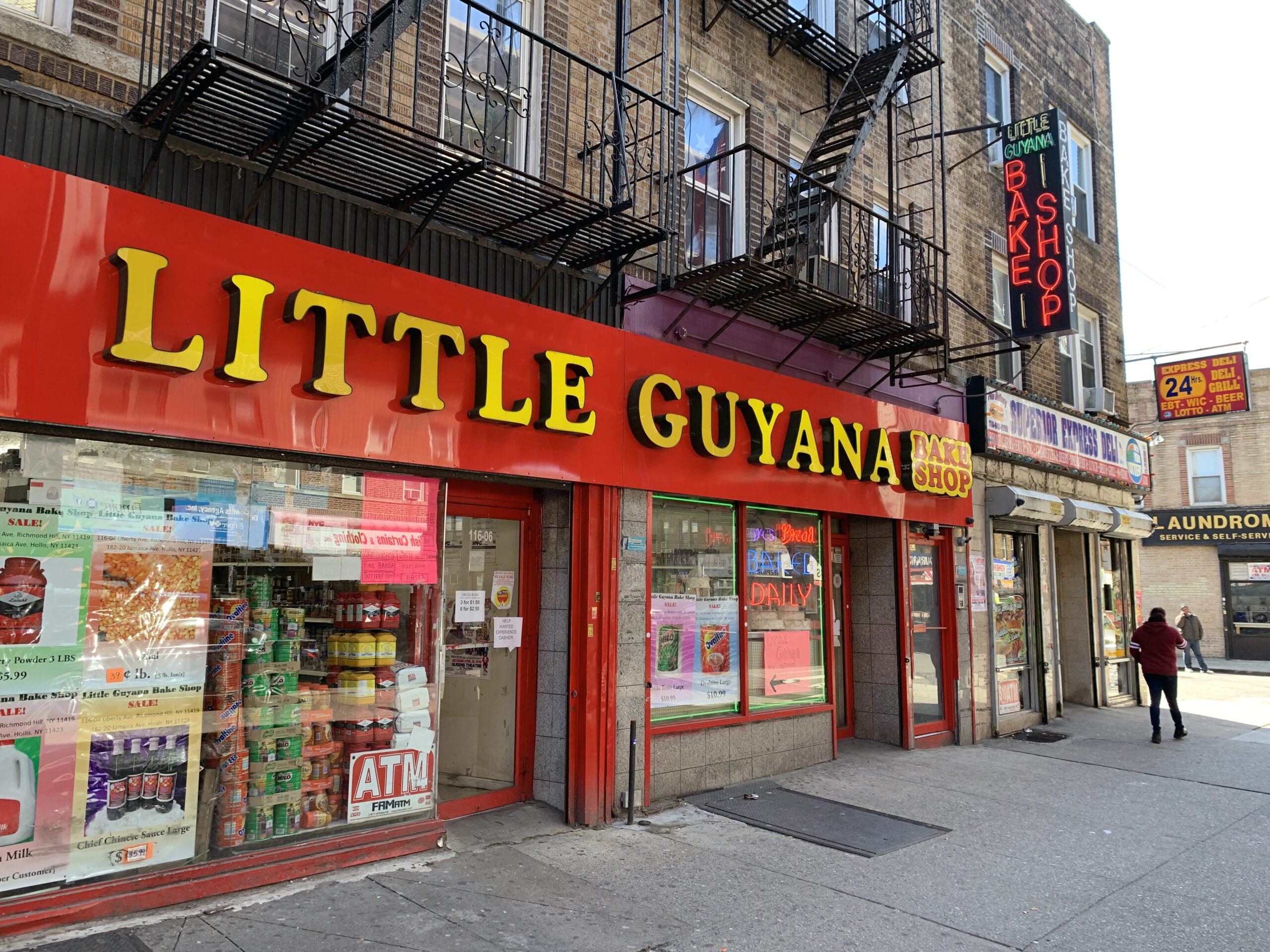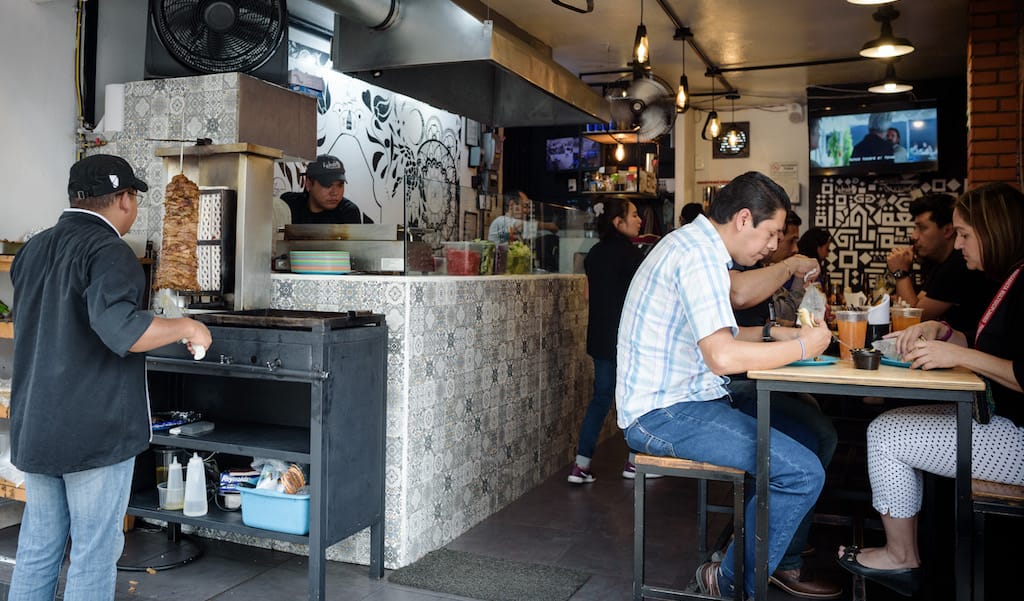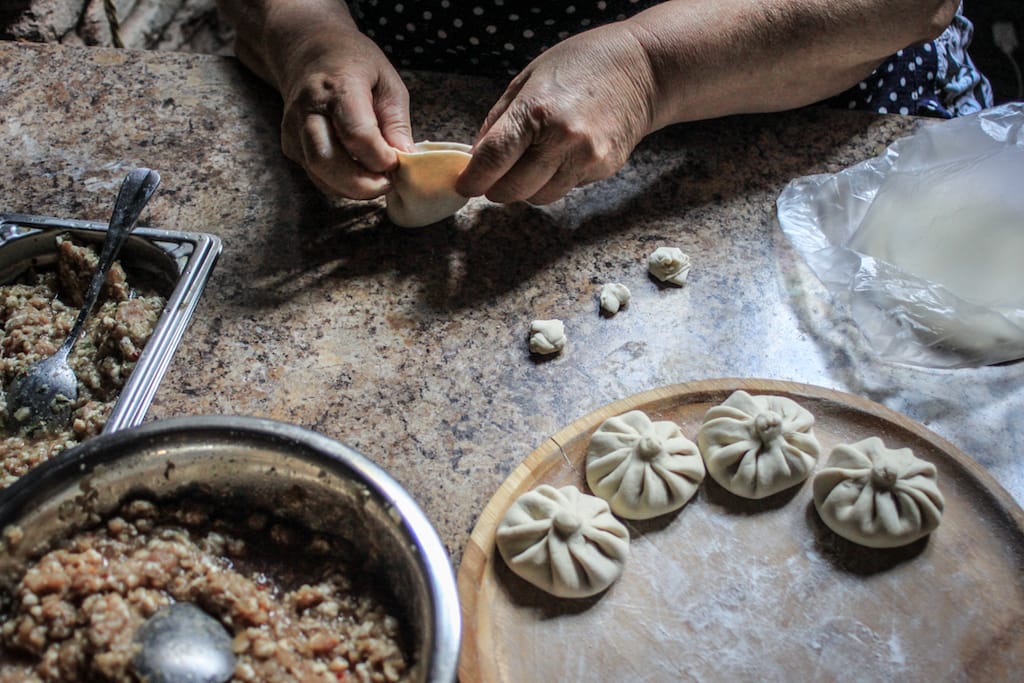Hidden in the small, nondescript streets of the Kuştepe neighborhood, just beyond the bustle of the Mecidiyeköy metrobus stop and pamphlet-pushing youths desperate to sell you English lessons, sits Дээж or “Deej,” one of the few Mongolian restaurants in Istanbul.
We first spotted it from the window of a moving bus while on another residence permit-related errand. The red storefront and Cyrillic lettering made it clear this was not just another kebab shop. Hesitant at first, we scouted around the outside – the restaurant is tucked into a side street, flanked by a shipping office and a construction site, and does not appear to exist on Google Maps. The smells emanating from the kitchen, however, quickly drew us in.
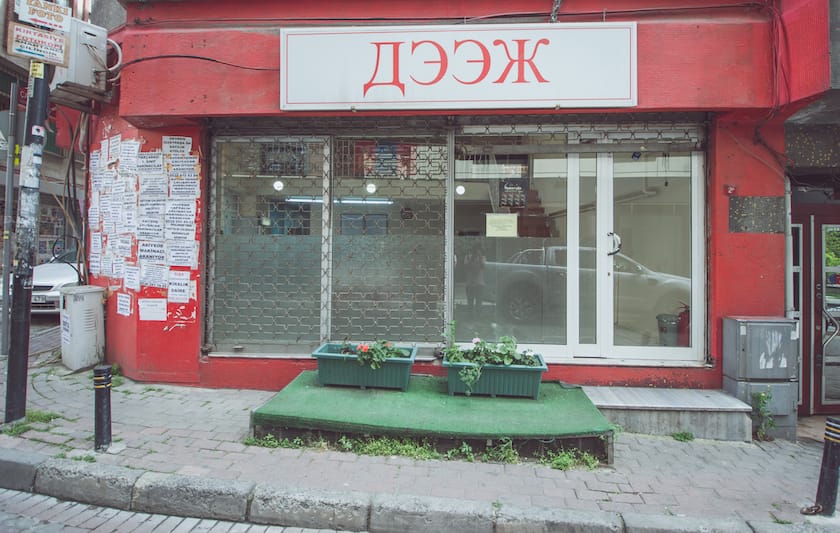
The place was empty apart from the woman at the counter and two young men wolfing down a plate of meat and rice at a corner table. But as afternoon set in, people trickled through for a quick meal, a friendly chat, or some khuushuur (a sort of meat-filled empanada) and mantuun buuz (dumplings) to go. We struck up a conversation with a Mongolian tourist: She was freshly arrived in Istanbul and had ventured out of the historic old town just to pick up some familiar snacks for her day of sightseeing.
Deej is the brainchild of Munkhmaa, who also goes by her Turkish name, Müge Güzeldemirci. With the help of our Mongolian-speaking friend Anu, we chatted with her on a subsequent visit as the kitchen staff were unpacking the latest shipment of Mongolian groceries for sale. “These might seem simple, but these are the things we use every day, the things we miss most when we are far from home,” Güzeldemirci tells us, gesturing to the packets of tea, noodles and herbal medicines lining the shelves behind her. Tourists visiting Istanbul or residents returning from visiting family often bring them here in their luggage to be sold and shared amongst the community. The restaurant’s name comes from a Mongolian practice of pouring the first portion of suutei tsai, or milk tea, to nature in an offering. Deej means the sacred root, the source of life itself – and it is certainly a source of life for Istanbul’s 5,000-strong Mongolian community.
Güzeldemirci moved to Istanbul in 1999 after marrying a Turk, and worked for many years in the small-business sector before founding the Moğolistan Dostluk Derneği (Mongolia Friendship Society), a nonprofit that works as an all-around resource for Mongolian expats in the city. Following a 2004-change to the law, Mongolians can stay in Turkey for 30 days visa-free, and more and more have come to Istanbul to pursue a different life or job opportunities. Many work in textile factories in and around Kuştepe, and Deej provides them with an affordable taste of home.
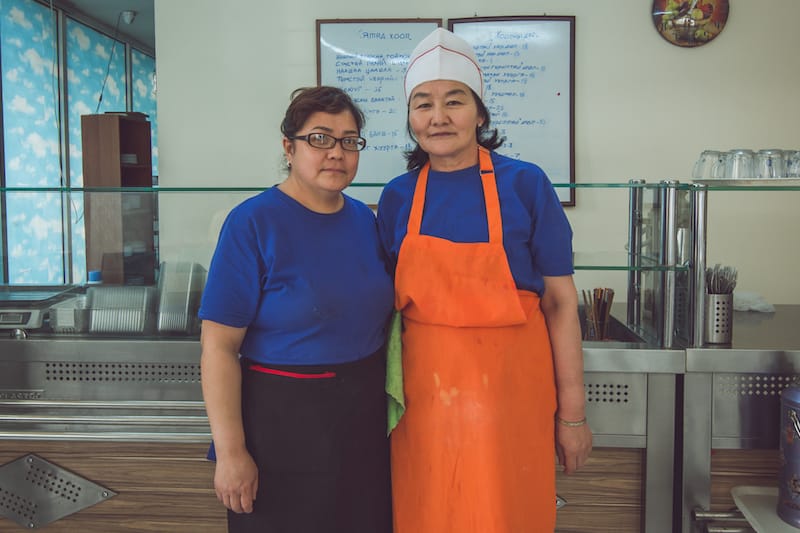
It’s also why we belatedly realized the menu, written in dry erase marker on a board hanging from the wall, was entirely in Mongolian. Nevertheless, armed with the names of a few traditional Mongolian dishes – khuushur, tsuivan (noodle stew), buuz – gained from some cursory YouTube research, we sheepishly approached the counter. As we attempted to order, our host smiled. “I’ll make you something, don’t worry,” she assured us, and ran into the kitchen.
Deej is about as plain on the inside as it is on the out, but a few classic touches mark it as outside the ordinary for Istanbul. Instead of Turkish hits, the television in the corner plays Mongolian music videos. The red, blue and yellow of the Mongolian flag hangs above the food counter instead of the typical star and crescent, and it is Genghis Khan, not Atatürk, glowering down upon us diners with a hint of pride. A number of scrolls written in the flowing vertical cursive of the traditional Mongolian script hang throughout the cafeteria-style eatery.
Deej means the sacred root, the source of life itself – and the restaurant is certainly a source of life for Istanbul’s 5,000-strong Mongolian community.
Once we had taken in our surroundings, the food began to arrive plate by plate, clearly prepared just minutes before. To calm any budding confusion, one of the chefs introduced each dish with an equivalent Turkish name. Many of the dishes resemble traditional Turkish ones, a reminder of the cultural ties that link the Turks with the Mongols across the mountains and steppes of the old Silk Road.
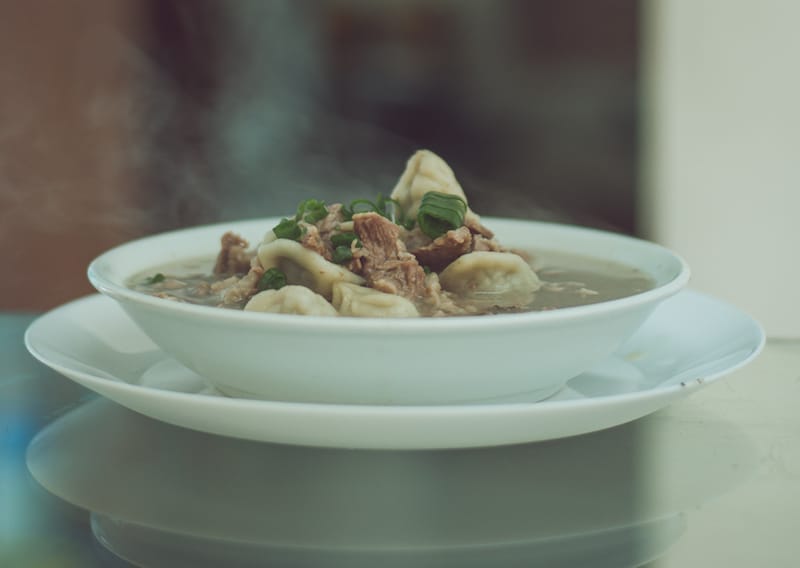
Our meal started with a steaming cup of suutei tsai poured from one of the enormous thermoses by the counter. A far cry from the bitter black Turkish çay served in delicate, tulip-shaped glasses, this tea is a salty, bolstering broth. At times, it is fortified with dried meat or toasted grain.
As with most Turkic cuisines, Mongolian food relies on meat, dairy and wheat products for the bulk of its nutritional value. While Deej’s mantuun buuz might resemble Chinese steamed buns more than the tiny, Anatolian manti, the connection is clear. Plus, some food historians theorize that buuz is the forebearer of all modern dumpling styles, which spread throughout Asia wherever Turkic peoples settled. Here, they are chewy, pleasantly irregular packets of dough swaddling juicy ground meat with herbs. Finally, still fragrant from its last toss in the wok, our meal is crowned with a heaping plate of tsuivan, which consists of steamed noodles and is not unlike Uygur lagmen.
This meat-driven cuisine has created one culinary challenge for Güzeldemirci, however: She finds Istanbul’s livestock, though locally sourced, to be lacking in flavor. Mongolian meat is almost exclusively pasture-raised, she said, where animals get plenty of exercise, have room to graze as they like and receive none of the antibiotics industrially raised livestock are fed.

But that doesn’t seem to be hurting the main draw of Deej, and by far what most diners order here: the khushuur starter, which can be a full meal in itself. This half-moon pocket of fried dough and meat is traditionally served at roadside eateries throughout Mongolia, and is eaten in abundance here at Deej. Yes, the star dishes are quite carb-rich, but you can find salad, though it’ll either be one of carrots, greens and peppers or the mayonnaise-based Russian variety of peas and pickles. Soups with dumplings or noodles swimming in a rich, restorative meat broth are brought to the table still bubbling, and Deej even offers homemade kimchi to give your meal an extra kick. For sale are packs of Mongolian tea; freshly made boortsog, or doughnuts; and khorkhoi boortsog, or snake cake, perfect for dunking in suutei tsai.
Aside from its shop, the upper floor of Deej serves as a meeting space for groups within the Mongolian community, and also operates part-time as an office space. Here, Mongolians can find more than a taste of home. Those looking for residency-related consultations or who are hoping to send money to their families back home can find assistance.
But Güzeldemirci told us she hopes her restaurant can make an impact beyond the Mongolian community. “I don’t want us to just reach Mongolians living in Istanbul, but also Turks,” she said. “We are both warm cultures and, for us, family and food are the most important things in life. I want Turks to come here so that we can share our food with them like they share with us.”
 May 6, 2019 Indo-Caribbean Queens
May 6, 2019 Indo-Caribbean Queens
Where the A train dead-ends at Lefferts Boulevard, Liberty Avenue stretches on into the […] Posted in Queens Migrant Kitchens, Queens April 22, 2021 Kebab Nation
April 22, 2021 Kebab Nation
At Culinary Backstreets, we tend to opt for tradition over trendy, street over chic. We […] Posted in Mexico City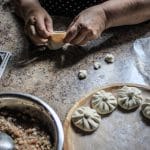 July 2, 2019 Khinkali Chronicles, Part III
July 2, 2019 Khinkali Chronicles, Part III
We bit into the khinkali, its handmade dough indelicate and sticky, as we like it. Steam […] Posted in Tbilisi
Geoffrey BallingerZeyad Abouzeid
Published on May 09, 2019
Related stories
May 6, 2019
QueensWhere the A train dead-ends at Lefferts Boulevard, Liberty Avenue stretches on into the heart of the enclave known as Little Guyana, part of the larger Richmond Hill neighborhood. Once a year, for the Hindu holiday of Diwali, a bedazzled motorcade turns the street into an eruption of colors, music and lights that is a…
April 22, 2021
Mexico CityAt Culinary Backstreets, we tend to opt for tradition over trendy, street over chic. We delve into a city’s blind spots when it comes to local favorites. Taking that approach makes it too easy to dismiss new spots out of hand. So, if it weren’t for our friend Liz hounding us for months about a…
July 2, 2019
TbilisiWe bit into the khinkali, its handmade dough indelicate and sticky, as we like it. Steam poured out the newly made hole, and we blew lightly before slurping up the rich stock and gobbling the dumpling down, even the puckered knob. The ground pork and beef was packed with fresh cilantro, the juices absorbed into…















































